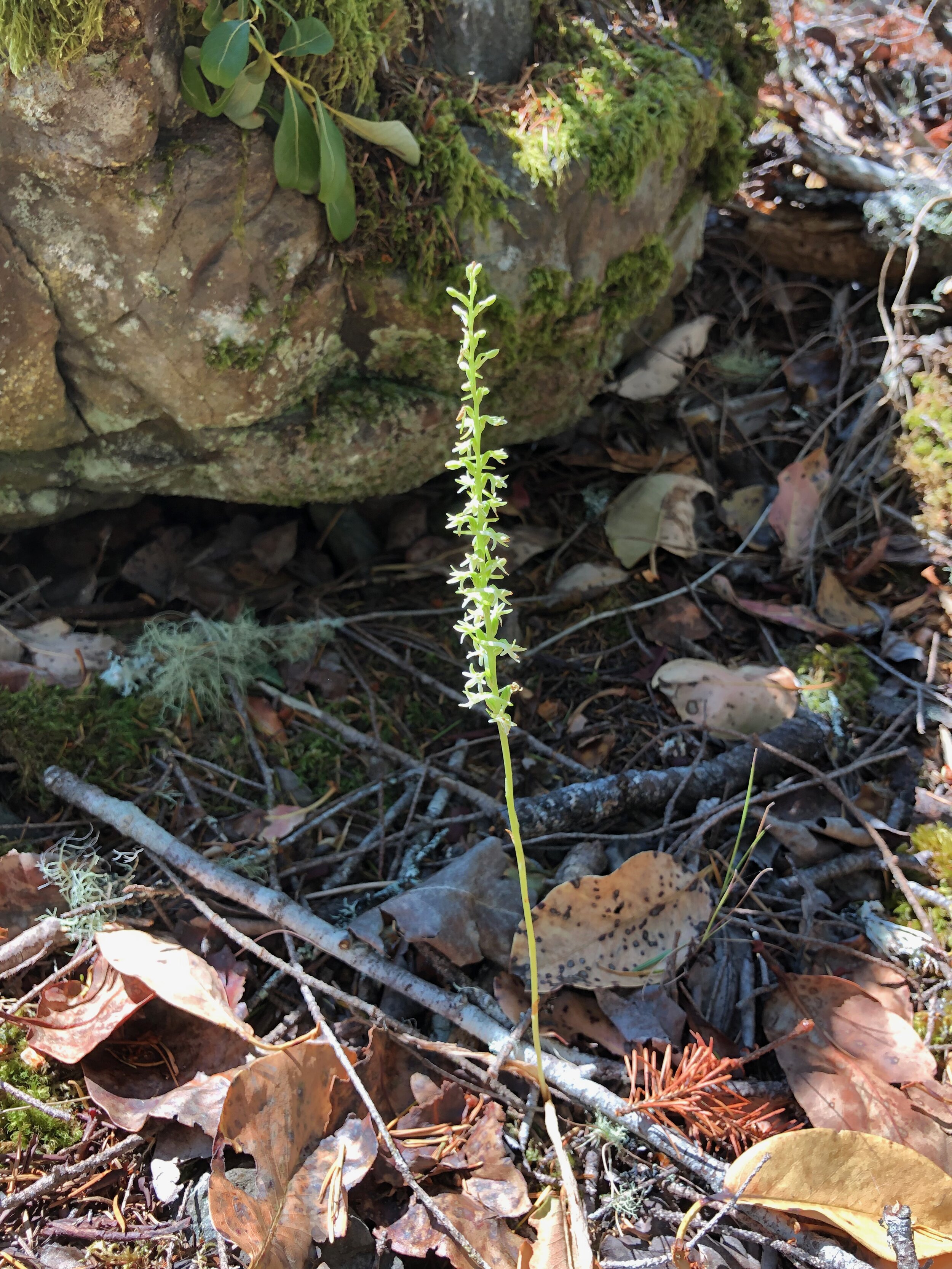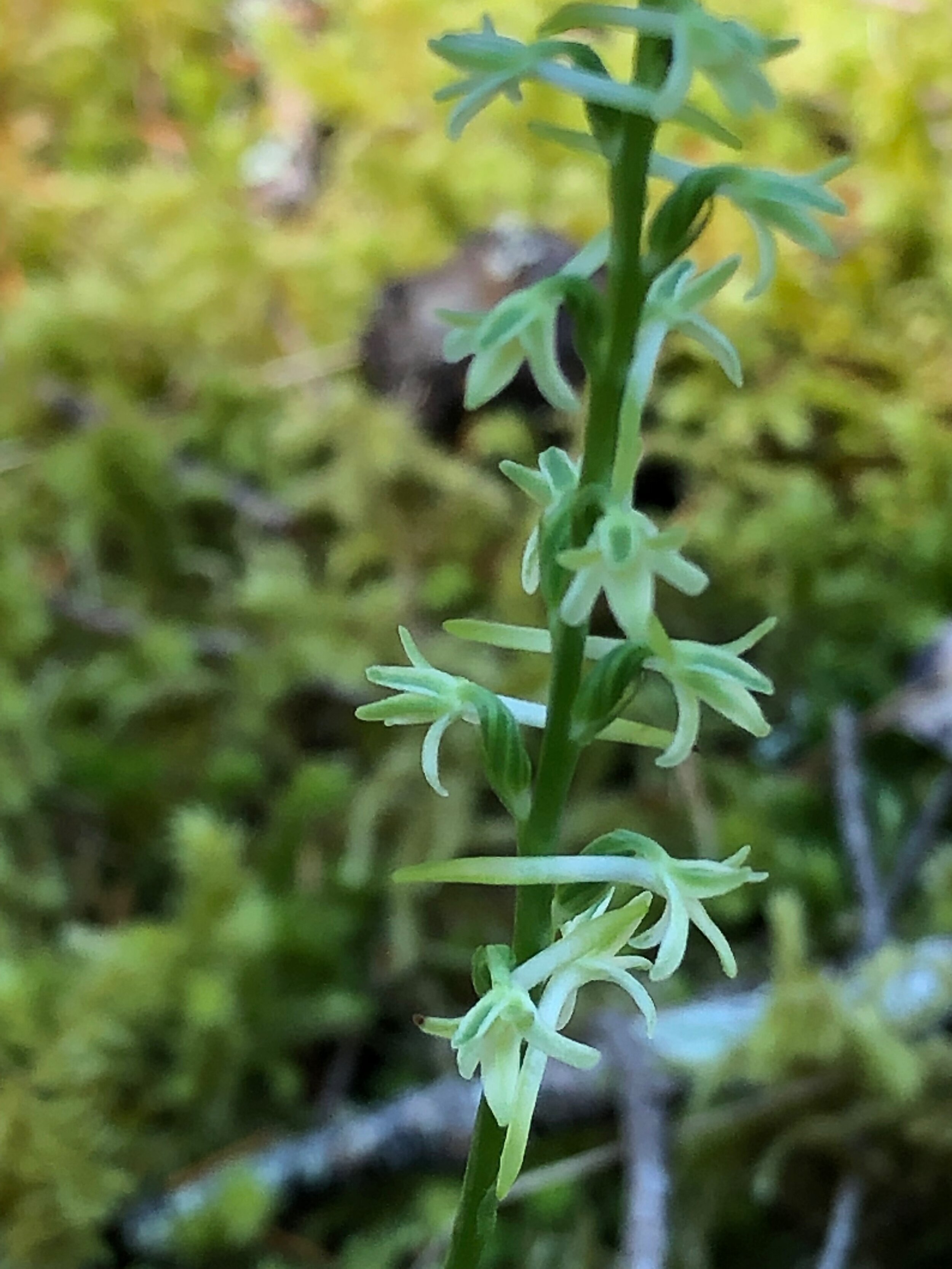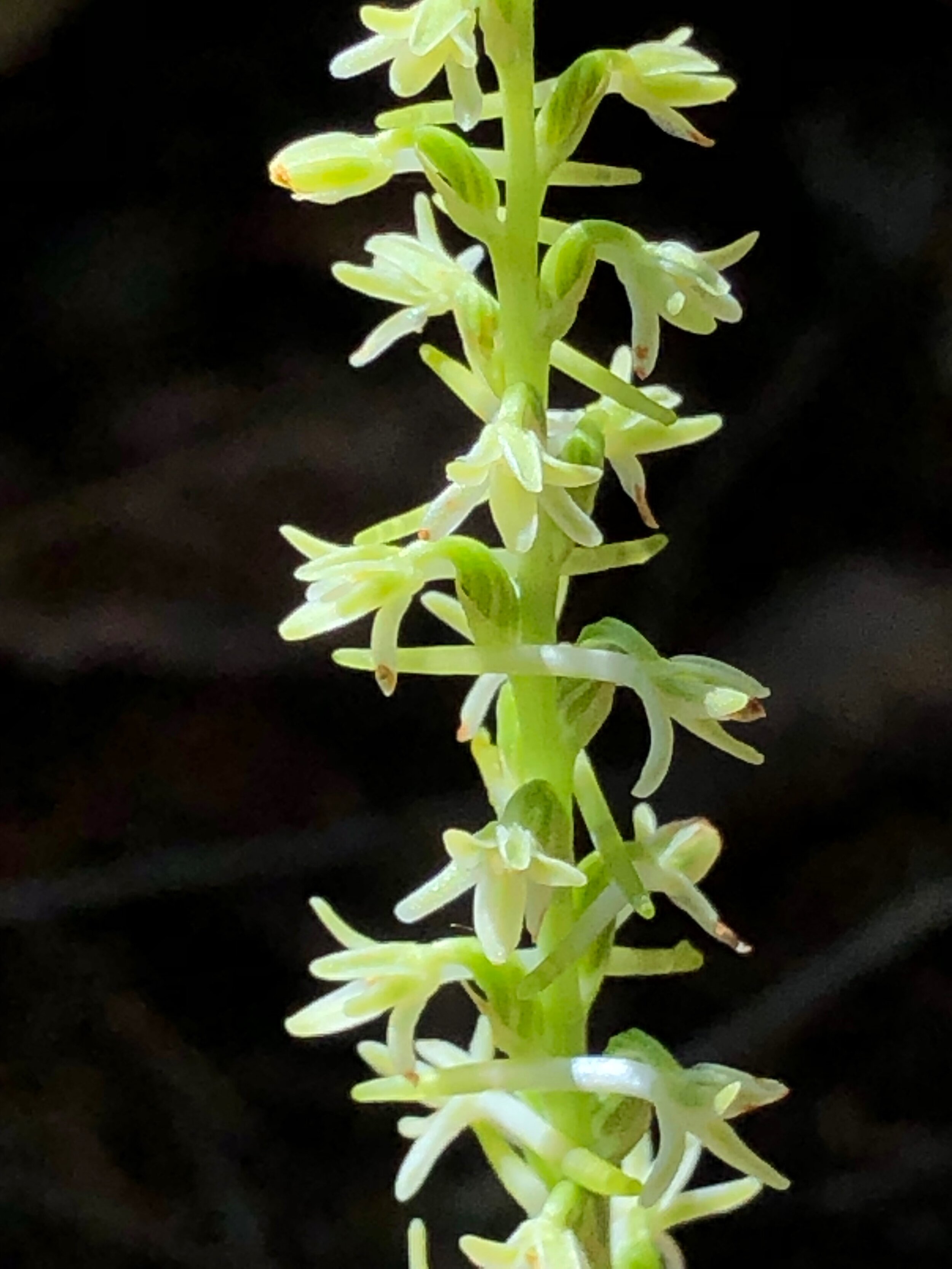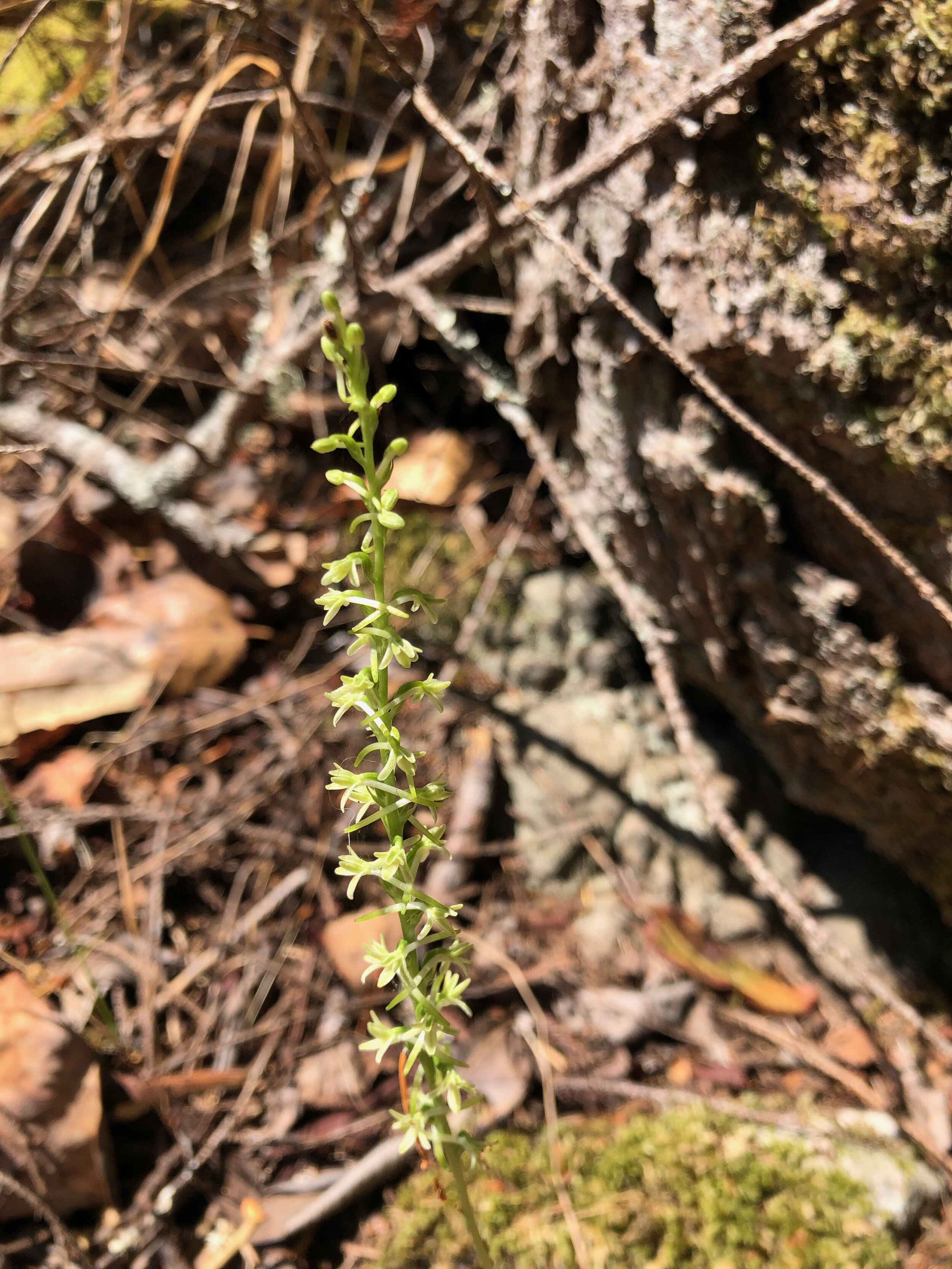Photo courtesy of Melanie Norris
On a beautiful 18 degree Celsius summer morning in July, two weeks after a record breaking heat wave on Vancouver Island, we ventured back to Matheson Lake to see how the native orchids were doing. We visited the same spot in May to find several patches of native orchid plants, most with small developing spikes. (See post here) I was anxious to know how the spikes were doing after the unbearable heat wave that affected most of BC, Washington, and Oregon in late June.
We were very relieved to find the orchid spikes managed to survive the heat from the previous weeks! The most prolific orchid we found was Piperia transversa. Most Piperia had lost the main leaves of the plant and had formed upright straight spikes - but most small, delicate flowers were not open yet. It would have been easy to step through and damage the spikes, as they generally blend in with the grasses and other small plants on the ground at this time of year.
The Goodyera oblongifolia remained prolific with many different spike heights. Below is a photo of two different kinds of orchids, each with a developing spike (without blooms). The smaller spike on the left is attached to the easily identifiable Goodyera oblongifolia plant with its small green leaf marked with a centre white line. The spike on the right, likely Piperia transversa, appears to grow out from the ground, as the original leaf of the plant has died back and is no longer visible.
As well, at this time of year, the Coralroot orchids no longer are in bloom, but it is possible to find some spikes with seed pods. The colour of this phase of the plant is still striking and worth a photo.
I look forward to visiting again later in the summer to see more Piperia blooms and perhaps some blooming spikes from the Goodyera oblongifolia.
In the meantime, we look forward to our CVIOS summer picnic (date TBA) and finally reconnecting in the fall when we restart our monthly meetings in person!







